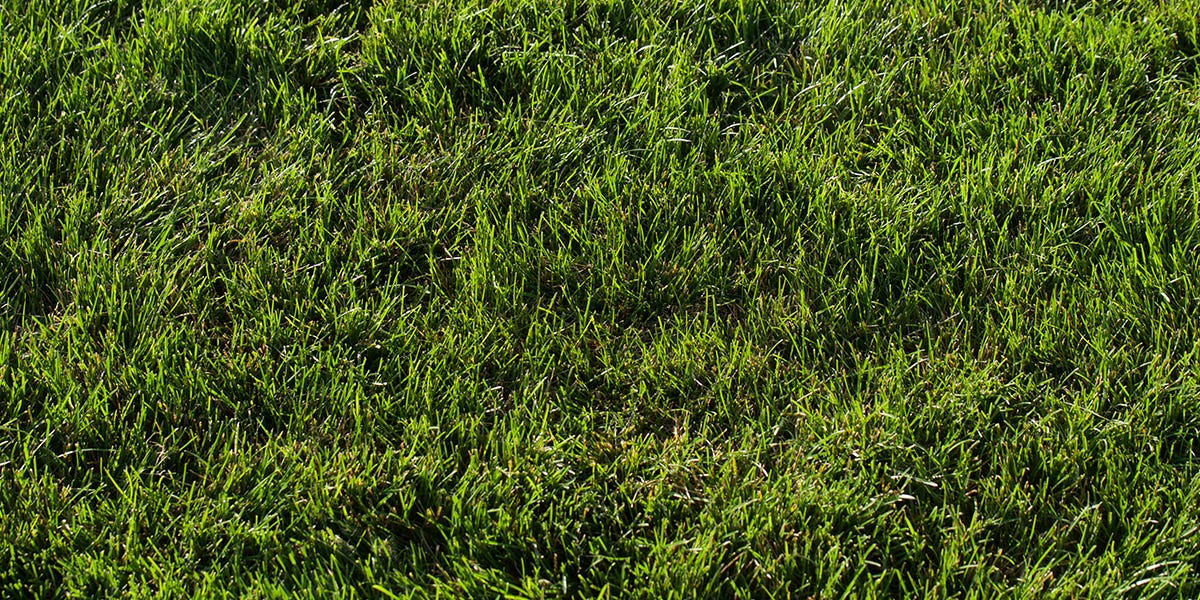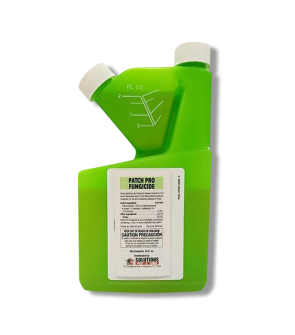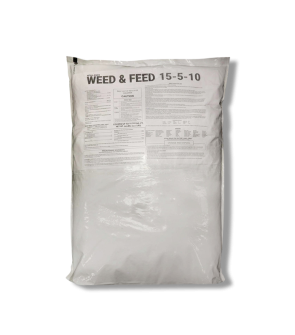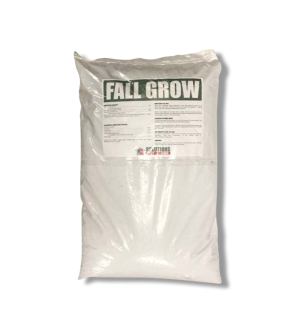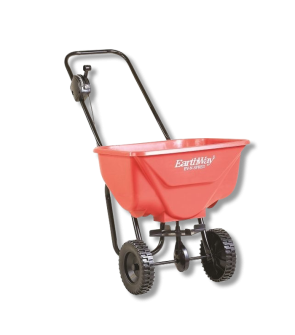Guide for Kentucky Bluegrass: Yearly Maintenance Program
Most Effective Products
Kentucky Bluegrass Control: How to Maintain Kentucky Bluegrass Yearly
This page is a general yearly maintenance guide for Kentucky Bluegrass. Using the products and methods suggested you will get complete control of your Kentucky Bluegrass. Follow this guide and use the recommended products and we guarantee 100% control of your Kentucky Bluegrass lawn.
Kentucky Bluegrass, also known as KBG or poa pratenis, is a perennial, cool-seasoned grass most commonly found in the northern states of the United States. However, it is not uncommon to find this turf in the transition zone of the United States since it has minimal heat tolerance.
This turf is known for its lush appearance, low-maintenance, and dense growth. It contains short fibrous rhizomes that helps Kentucky Bluegrass to withstand intensive activities. Making Kentucky Bluegrass an ideal choice for residential landscapes, sports fields, and other commercial areas.
Compared to other types of cool-seasoned grasses, Kentucky Bluegrass has the quickest ability to spread through its rhizomes. Its root system also promotes fast recovery from colder weather. The adaptivity of Kentucky Bluegrass is limited to warmer regions such as the South. In addition, Kentucky Bluegrass is not very shade tolerant and will thin or die if planted in heavily shaded areas such as underneath trees.
Throughout this DIY guide, you will learn how to maintain a healthy, lush Kentucky Bluegrass lawn throughout the year. If you have any questions with the following methods or tips, then please contact one our trained professionals through phone or email.
Identification

Before considering a treatment approach, you need to identify the turf and confirm if it is Kentucky Bluegrass. Misidentification can lead to a waste of time and money by using the wrong herbicides products.
- Kentucky Bluegrass has dark green colored grass with some blue tones.
- The leaves of Kentucky Bluegrass are boat-shaped (rounded) tips. In the spring, the panicle of the leaves will form 2" to 6" spikelet's.
- Spikelet's are light to purplish green.
- Kentucky Bluegrass will grow from its short underground stems known as rhizomes. The rhizomes grow between 2 to 4 inches beneath the turf's soil.
- Prefers partial sun and cool to warm temperatures below 75 degrees Fahrenheit.
- Grows best with soil pH levels between 6.0 to 7.0.
Use the description above and the images to help you properly identify Kentucky Bluegrass. If you are having trouble identifying your turf, contact us and include a photo of your grass to better assist you with identification.
Inspection

Once you confirmed that your turf is Kentucky Bluegrass, you can then move forward with inspection. During the inspection phase, you are learning where Kentucky Bluegrass is growing and what the conditions of the turf are. This will help you determine where to apply your applications.
When to Inspect
Kentucky Bluegrass is a cool-seasoned turf that is most commonly active in the fall season and early spring. During phases of warmer weather such as summer, the turfs will go into dormancy. When in dormancy, Kentucky Bluegrass will be brown, and withered.
What to Look For
Kentucky Bluegrass is easily identified by the light to purplish green spike heads or seed heads on the top of its leaf blades when fully matured. Prior to full maturity, Kentucky Bluegrass will have rounded tips at the top of its leaf blades and will dominate large portions of your property except for heavily shaded areas.
Treatment
The first thing to do in any lawn care maintenance program is to ensure you have the proper personal equipment (PPE).
During the cooler winter months of your location is the best time to begin a Kentucky Bluegrass maintenance program. Still, winters arrival and departure can vary year to year so it recommended to let your lawns dormancy or state of health be your guide.
Step 1: Mow in April and As Needed Throughout the Year

Once Kentucky Bluegrass is fully awaken and established in April, begin mowing as needed throughout the year. You may mow in March, if Kentucky Bluegrass has regained its full color and exceeds an height of 3 inches. Typically, April has the best chance of Kentucky Bluegrass completely awakening from dormancy.
Optimal mowing height for Kentucky Bluegrass lawns is 3 inches or more. If your lawn does not meet this height then it cannot be mowed.
If you are frequently mowing your turf then there is no need to remove the grass clippings, as they are beneficial for natural fertilization.
Step 2: Apply Solutions 15-5-10 Weed and Feed Fertilizer with Trimec in Mid-April to Mid-May

Between the last weeks of April and first two weeks of May, you will need to apply a pre-emergent herbicide and spring fertilizer containing high amounts of nitrogen.
For the best of both worlds, we recommend Solutions 15-5-10 Weed and Feed Fertilizer. As the name suggests, this product works to fertilize your Kentucky Bluegrass and fight against numerous weeds within your spring lawn.
To apply this product you will need to use a hand or broadcast spreader. At least 1 to 2 days prior to application, make sure to mow your lawn to allow the Solutions 15-5-10 Weed and Feed Fertilizer to reach your turf soil. However, if your lawn does not meet the 3 inch or more requirement you will need to wait to apply this product.
To determine how much Solutions 15-5-10 Weed and Fertilizer to use, you will calculate the square footage of your lawn by multiplying the length times the width (length X width = square footage). A general application would be between 3.2 to 4.0 lbs. of product per 1,000 sq. ft. Load the appropriate amount of Solutions 15-5-10 Weed and Feed Fertilizer into your selected spreader. From the corner of your treatment area, walk a straight horizontal line until you have completed your perimeter application. Once the outside perimeter has been treated, walk a back and forth motion to evenly coat the areas inside the perimeter.
Water with at least an inch of water to activate the product.
Step 3: Water Consistently Throughout the Year

Begin watering as needed once Kentucky Bluegrass has regained its full color.
Water frequently throughout the year with no more than 1 inch of water per week.
Avoid overwatering and late evening watering's for this can cause fungi and disease growth, broadleaf weeds, and grassy weeds.
For best success, deeply water your lawn early in the morning before 11 am to provide your Kentucky Bluegrass with enough time to soak in moisture.
Step 4: Repair Lawns with Fungicide in June

Kentucky Bluegrass struggles during the warmer and drier summer months from June to July. These conditions create the perfect environment for fungi and other diseases.
To combat these conditions, we recommend using Patch Pro Fungicide which works systemically to eliminate a broad spectrum of diseases. Use the same formula or the total square footage in step 2 to determine how much Patch Pro Fungicide to use. Based on the present fungi or disease growth will determine how much of this product to use. A general rate of application for Patch Pro Fungicide is 0.5 to 4 fl. oz. per 1,000 sq. ft. in a gallon of water.
In a pump or backpack sprayer, add half the required amount of water into the selected tank. Then, add the measured amount of Patch Pro Fungicide. Fill the sprayer tank the rest of the way with the other half of water. Secure the lid to the sprayer tank and agitate until solution is evenly mixed.
Adjust the sprayer to a fan setting for easier control during application and apply the mixed solution onto target areas.
Step 5: Apply Insect Control Product Mid-June to Mid-July

Treat your Kentucky Bluegrass for insects during the last two weeks of June to the first two weeks of July. During the summer, your Kentucky Bluegrass cannot completely fight against insect damage which can lead to permanent damage.
Our go-to-product for insect control is Reclaim IT. This product can be used to repel and eliminate a broad variety of insects within 90 days (3 months) after application. Use the square footage of your lawn to determine how much Reclaim IT to use. The standard rate of Reclaim IT is to mix between 0.2 to 2 fl. oz. of product per gallon of water. For general pest applications, we recommend using 1 fl. oz. of Reclaim IT per 1,000 sq. ft. Specific rates of application for each insect control method can be found on the product label.
Determine how much Reclaim IT to use by the total square footage of your lawn. Take the total square footage and divide by 1,000 to learn how much Reclaim IT to use. For example, if you have 4,000 sq. ft. to treat, you will need 4 fl. oz. of Reclaim IT in 4 gallons of water (4,000/ 1,000 = 4).
Load your sprayer halfway with the appropriate amount of water, add the measured amount of Reclaim IT, and then fill the rest of the way with the other half of water. Agitate well until spray solution is evenly mixed and then coat the top and bottom of Kentucky Bluegrass leaves.
Step 6: Reseed Lawn in August

Kentucky Bluegrass lawns are typically emerging from summer dormancy during the month of August. If you notice that your lawn appears bare or thin from summer stress or heat then you may have to reseed the lawn.
Reseed is done by spreading the Kentucky Bluegrass seeds over the entire length or barren spots in your yard. Scatter the seeds of the Kentucky Bluegrass through a hand spreader or by hand over the desired areas. We recommend using a hand spreader to avoid spreading grass seeds to close together. For an example of even seed application refer to the image above.
Lightly water your seeded area each day until Kentucky Bluegrass seeds have reached a height of one inch. While there is no recommend rate for early seed watering you will want to avoid pools of water gathering. Another recommendation to follow is to avoid watering late in the evenings, and apply water in the early mornings.
When your Kentucky Bluegrass has reached a height of 1 inch you will follow the water guidelines in step 3.
Keep in mind you cannot apply any pesticide, herbicide, or chemical solutions until seeds have become established. Typically, this is 45 days after first reseeding or when your turf has been mowed at least 3 times. Your turf cannot be mowed until it reaches a height of 3 inches or more.
Step 7: Apply Fall Fertilizer in September and November
Kentucky Bluegrass lawns require 2 to 3 fertilizations throughout the year. The first one being in April, second in September, and third in November.
Contrary to the spring fertilization in step 2, you will need to use a fall fertilizer such as Solutions 8-12-16 Fall Grow Fertilizer. These fertilizations in the fall, may eliminate the need to fertilize in spring.
When Solutions 8-12-16 Fall Grow Fertilizer is applied in September and November it is providing your Kentucky Bluegrass with essential nutrients to encourage growth during the active growing season. In return, this provides a richer color in your lawn and helps to strengthen it against weed and disease growth. A standard rate of application for Solutions 8-12-16 Fall Grow is 5 lbs. of product per 1,000 sq. ft.
Following the same instructions in step 2, you will load the appropriate amount of Solutions 8-12-16 Fall Grow Fertilizer into your spreader. You can also test the pH levels in your soil to determine the specific amount of nutrients needed in your Kentucky Bluegrass lawn. To do this, you will take a sample of the soil and turf to your local extension office, governed by the national pesticide information center.
For example, if your Kentucky Bluegrass needs 1 lb. of nitrogen then you will divide the 1 from the level of nitrogen in the fertilizer. In this case, the nitrogen level in Solutions 8-12-16 Fall Grow is 8. Take the 8 and convert into a decimal form and divide it by the level of nutrients needed ( currently it is 1) to determine how many pounds of fertilizer to use per square footage (1 / 0.08 = 12.5 lbs.). Thus, you will apply 12.5 lbs. of Solutions Pro Gro per 1,000 sq. ft. to supply 1 lb. of nitrogen.
Once Solutions Pro Gro is applied, water the product with an inch of water to activate.
Key Takeaways
When is Kentucky Bluegrass Dormant?
- Kentucky Bluegrass is dormant during the warmer months of the year such as May to July.
When to Begin and End Yearly Maintenance for Kentucky Bluegrass?
- A proper yearly maintenance program begins when Kentucky Bluegrass is fully emerged from dormancy. Typically, this is during the early spring (March to April) and August. The last herbicide application should be made within the first weeks of November. During the months between November to March, you may continue to follow the water schedule.
How Often To Water Kentucky Bluegrass?
- When fully established, Kentucky Bluegrass should be deeply watered with an inch of water before 11 am. For young or newly established seeds, they will need to be lightly watered each day in the early morning until they reach a height of 1 inch.
When to Fertilize Kentucky Bluegrass?
- Kentucky Bluegrass requires consistent levels of nitrogen and will need a total of 2 to 3 fertilizer applications each year. The first fertilization will be in April with a spring fertilizer such as Solutions 15-5-10 Weed and Feed. The second and third fertilizer applications will be in September and November with a fall fertilizer like Solutions 8-12-16.
